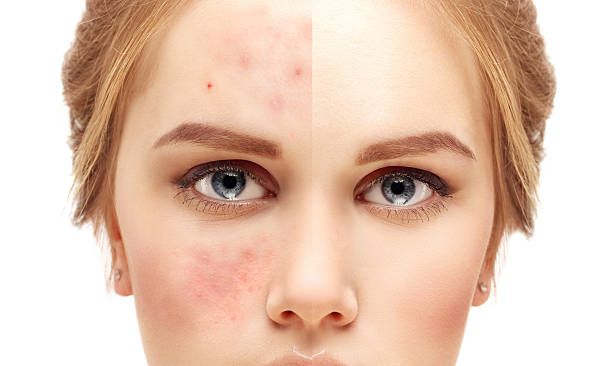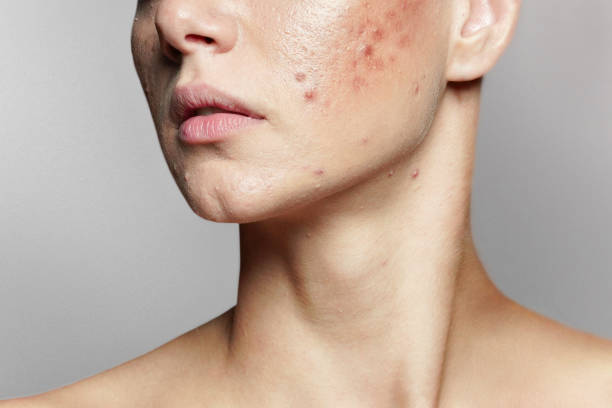Acne is a common skin condition that affects millions of people worldwide. While the presence of acne can be distressing, it is often the scars left behind that continue to affect an individual’s self-esteem and confidence. Acne scars can manifest in various forms and types, each requiring specific treatment approaches to achieve smooth and flawless skin. In this comprehensive guide, we will explore the different types of acne scars treatment in kolkata and provide a detailed overview of the most effective treatments available.
Also Read: How to Get a Shining Bridal Glow with the Best Skin Specialist in Kolkata

Understanding Acne Scars
Acne scars are the result of inflammation caused by acne breakouts. When the skin experiences a pimple, the body produces collagen fibers to repair the damaged tissue. In some cases, an excessive amount of collagen is produced, leading to raised scars known as hypertrophic or keloid scars. On the other hand, if there is a loss of tissue during the healing process, depressed scars such as ice pick, boxcar, or rolling scars can form.
Types of Acne Scars
- Ice Pick Scars: These scars are characterized by small, deep pits in the skin that resemble puncture marks caused by ice picks. They are typically narrow and extend into the deeper layers of the skin.
- Boxcar Scars: Boxcar scars are wider depressions with well-defined edges that create a box-like appearance on the skin. They are often shallow to moderately deep and can be round or oval in shape.
- Rolling Scars: Rolling scars have a wave-like or undulating appearance on the skin. They are caused by bands of scar tissue that pull the epidermis downward, resulting in an uneven surface.
- Hypertrophic Scars: Hypertrophic scars are raised and thickened scars that develop as a result of excess collagen production during the healing process. They are usually red or pink and may fade over time.
- Keloid Scars: Keloid scars are similar to hypertrophic scars but extend beyond the original wound or acne site. They are raised, often larger than the initial wound, and have a tendency to grow beyond the boundaries of the affected area.
Acne Scars Treatment Options
- Topical Treatments: Certain topical creams and gels containing ingredients such as retinoids, alpha hydroxy acids (AHAs), or silicone can help improve the appearance of mild acne scars over time. These products promote collagen production, reduce pigmentation, and encourage skin cell turnover.
- Chemical Peels: Chemical peels involve the application of a chemical solution to the skin, which exfoliates the outer layer and stimulates collagen production. Superficial and medium-depth peels can be effective in treating mild to moderate acne scars, improving skin texture and reducing discoloration.
- Microneedling: Microneedling, also known as collagen induction therapy, involves the use of a device with tiny needles that create controlled micro-injuries in the skin. This process stimulates collagen production, which can help improve the appearance of acne scars. Microneedling can be combined with topical treatments or platelet-rich plasma (PRP) for enhanced results.
- Laser Therapy: Laser treatments, such as fractional laser resurfacing and ablative laser resurfacing, can effectively target and reduce the appearance of acne scars. These treatments work by stimulating collagen production, resurfacing the skin, and promoting new cell growth. Laser therapy may require multiple sessions for optimal results.
- Dermal Fillers: Dermal fillers, such as hyaluronic acid-based injections, can temporarily fill in depressed acne scars, giving the skin a smoother and more even appearance. This treatment provides immediate results, but the effects are temporary and may require repeated sessions.
- Subcision: Subcision is a minor surgical procedure that involves the insertion of a needle beneath the skin to break up fibrous bands that create rolling or depressed scars. By releasing these bands, the skin can elevate, reducing the appearance of scars. Subcision is often combined with other treatments for optimal results.
- Punch Excision: Punch excision is a surgical procedure used for treating ice pick scars. It involves the use of a small punch tool to remove the scar tissue, after which the wound is stitched closed. The area heals, resulting in smoother skin.

Conclusion
Acne scars can be a persistent reminder of past skin troubles, impacting an individual’s self-confidence and overall well-being. Fortunately, a range of treatment options is available to help diminish the appearance of acne scars and achieve smoother, more even skin. Depending on the type and severity of the scars, topical treatments, chemical peels, microneedling, laser therapy, dermal fillers, subcision, and punch excision can all contribute to significant improvements in scar appearance.
Remember, at Image Clinic, it is crucial to consult with our expert dermatologists or skincare professionals who can assess your specific situation and recommend a personalized treatment plan. With our comprehensive care and tailored approach, you can embark on a journey towards achieving smooth, radiant skin and bidding farewell to the burden of acne scars. Trust Image Clinic for effective solutions and a renewed confidence in your skin’s appearance.


